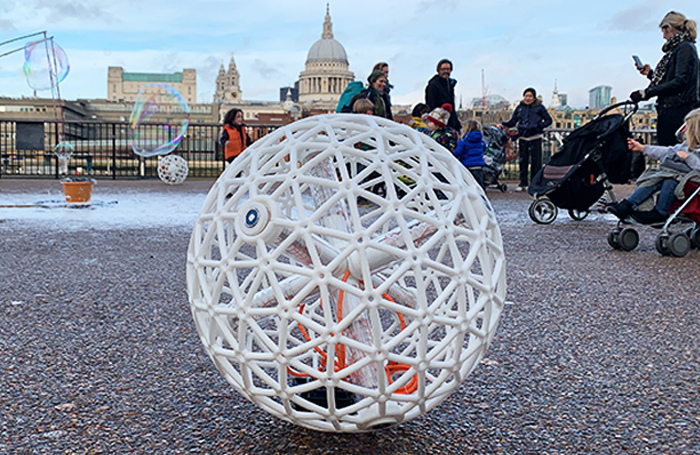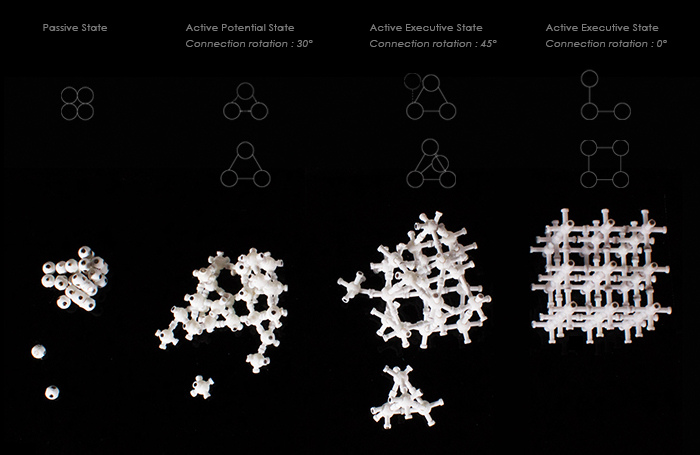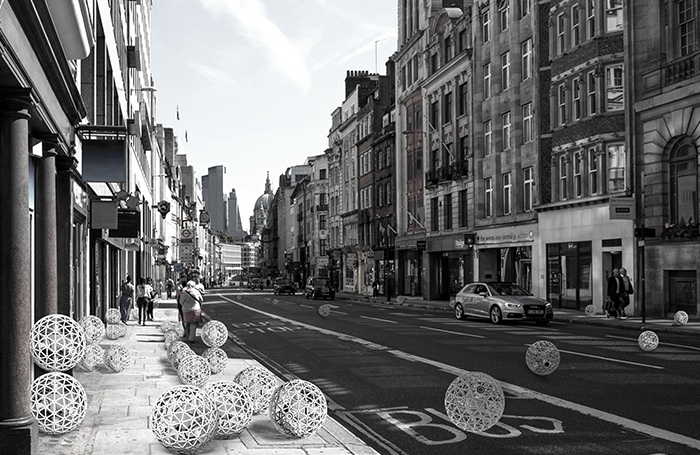Elisavet Konstantinidou, Misbah Shehreen Baig, Roshni Gera and Yunzhu Duan, students at the Architectural Association School of Architecture, present Orb[i]s, a Design Research Project addressing change in the urban environment and the future of culture.
The students work in the Spyropoulos Studio on the Architectural Association Design Research Laboratory, AADRL programme, headed by Theodore Spyropoulos, which moulds radical project typologies.
In this essay, they present their ideas for a Prototypical System that responds to the changing needs of the city, augmenting the daily experiences and activities of its occupants.

“Without culture, and the relative freedom it implies, society, even when perfect, is but a jungle. This is why any authentic creation is a gift to the Future.” - Albert Camus
What could the future of culture look like?
In order to address the future of culture, architecture must be explored through a lens that looks beyond static and conventional systems of infrastructure.
The idea of what the future of cultural spaces holds coaxes us to move towards systems that would be intelligent and autonomous with the ability to transform, be mobile and reorganise.
We envision the creation of a realm that has its own predispositions and will be choreographed by self-assembling and structuring systems that will curate spaces beyond conventional building typologies.
By exploring behaviour-based design, we must reconsider cultural projects for today, through the development of self-aware practices that see architecture as an organisation to address latency and change. The ability to make decisions and be intelligent should start being imbibed through broadly adopted methods of machine learning. This in turn would support the system’s adaptive attribute to cater to the environment it is set in.
The intent is to develop new relations in the ever evolving, adaptive human-machine ecology.

Introducing Orb[i]s
Orb[i]s is a Design Research Project aimed at addressing constant change in the urban environment. It is a Prototypical System that is highly adaptive in nature, creating spatial infrastructure in the urban environment that will respond to the changing needs, numbers and development within the city, augmenting daily experiences and activities of its occupants.
It is a behavioural assembly that opens up the possibilities of a dynamic environment that is not limited to a building plan, rather is autonomous, adaptable, dynamic and self–assembling based on real-time data culminating in a constantly re-configuring ecology.
An incorporated sensory system encourages decision making within the system, making it self-aware. The self-assembling quality of the system arises from the ability of unit to unit communication through signals, which in turn leads to higher orders of organisations and structures.
.png?rev=b1439012bb874eac8aacd16257629bc1&h=800&w=700&la=en&hash=C11DFA545616BB1D845EC622F0E2FB04)
Orb[i]s design
A single unit is designed with relation to the effect it would have on the overall system comprised of hundreds and thousands of such units. These units could be looked at as intelligent building blocks that have the ability to analyse and make decisions.
Each unit is designed with the ability to be mobile, sense and connect to other units. After a series of tests and experiments, the geometry finalised is a spheroidal unit, which has six telescopic legs within in, each having the ability to expand in six perpendicular directions from the centre of the sphere.
Each of these ‘legs’ has an electromagnet attached at the end of it with the ability to connect to six other units. On expansion, each of these legs has a controlled rotation to enable formations that break free from a rigid grid, further enhancing its adaptive nature.
The highly adaptive nature of the system springs from these telescopic connections. With the potential of the system to expand to twice its volume by mere expansion of the connection between individual units, an immense amount of transformability is achieved overall.
The geometry of each individual unit has been designed in relation to the human scale, and the way in which they arrange themselves would enable their use as urban elements such as furniture, gathering spaces, shaded walkways, pavilions, etc.
.png?rev=e104e0a1b5354242827f6fe00d217e86&h=455&w=700&la=en&hash=9889FCC47E6F9A9766F8FB326D7CA35C)
Intelligent systems
Upon coming together with other units, the system demonstrates collective intelligence and a plethora of changing behaviours, providing a higher level of flexibility and adaptability.
The intelligent aspect of the system moves beyond just conventional infrastructure and could contribute to more complex behaviours (stigmergy & flocking strategies) which could also be utilised in unconventional means such as crowd segregation/control, creation and indication of safe paths, etc.
In addition to its adaptive, space-making ability, the system provides a layer of interaction with its users. Culminating from research of light and its various effects, illumination has been incorporated in the system to provide an added layer of experience. Using a further advanced sensory system, the overall system responds to users with artificial light when lack of natural light is detected.
The system analyses and maps interaction with its users in order to adapt and transform the space conducive for use, based on the time, frequency of use and occupancy.
Orb[i]s could refer to a singular unit, a system or an ecology composed of thousands of individual units. It is the assemblage of attributes that are envisioned to provide spatial and experiential infrastructure that will augment and aid urban change.
Orb[i]s is a student project submitted through RIBA Future Architects; our network and community for future and emerging architects, designed to support, inspire and provide a voice as you transition from study to practice. View our resources here.










